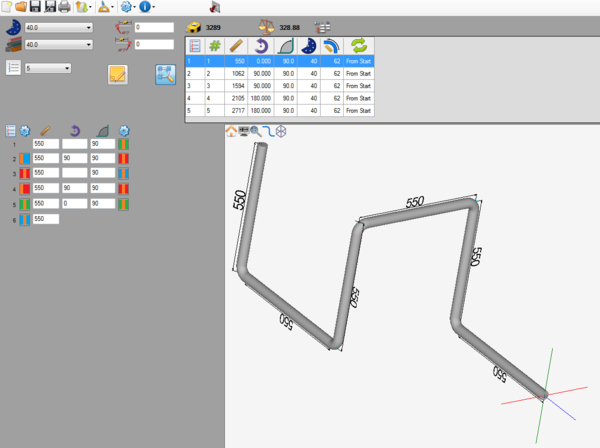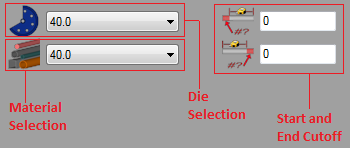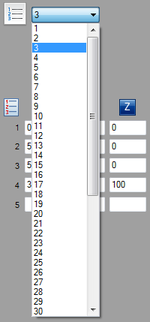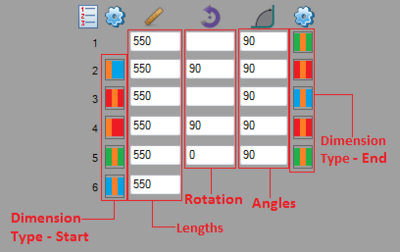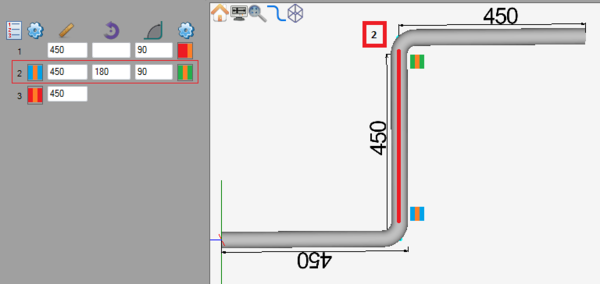Linear Advanced Designer
Description
The Linear Advanced Designer allows parts to be created in full 3D. Parts are designed by choosing the number of bends and supplying length, rotation, and angle values. The dimension types can be adjusted for each end of each straight length between the bends.
How To
Start Up
To access this designer, click the linear advanced button ![]() . This will open a new, blank part design.
. This will open a new, blank part design.
Part Design
Once a new linear advanced part design window has been opened, a new part can be created.
First, a die and material should be chosen. This can be done by clicking on the drop down menus next to the die and material icons in the top left corner of the screen.If any cut-off is necessary, enter the amount needed into the start and end cut-off fields. The first/top field represents the cut-off at the start of the part and the second/bottom field represents the cut-off at the end of the part.
To start designing the part, enter values into the designer entry fields on the left panel. Each bend and the last straight length will have its own row. The first column represents the dimension type for the end of the straight on the opposite end before the straight length. The second column below the ruler icon represents the straight lengths of tube. The third column below the arrow icon represents the rotations for each bend. The fourth column below the angle icon represents the angle of each bend. The fifth column represents the dimension type for the end of the straight directly before the bend. See image below.
Changing the dimension type will affect the way the lengths are measured on either end of the bend. For example, on the second bend, the first column of dimension types will affect the dimension on the far end of the bend and the second dimension column will affect the end closest to the bend. See image below.
Dimension Type Explanations:
Controls and Options
Notes can be attached to the part design project using the note button ![]() .
.
The auto-zoom option can be turned on or off using the auto-zoom button ![]() . When activated, auto-zoom will zoom in or out to accommodate the size of the part. For example, if a length is originally 200 and is changed to 2000, it may extend past the part display's extend. Auto-zoom will zoom out to make sure the whole part is visible.
. When activated, auto-zoom will zoom in or out to accommodate the size of the part. For example, if a length is originally 200 and is changed to 2000, it may extend past the part display's extend. Auto-zoom will zoom out to make sure the whole part is visible.
